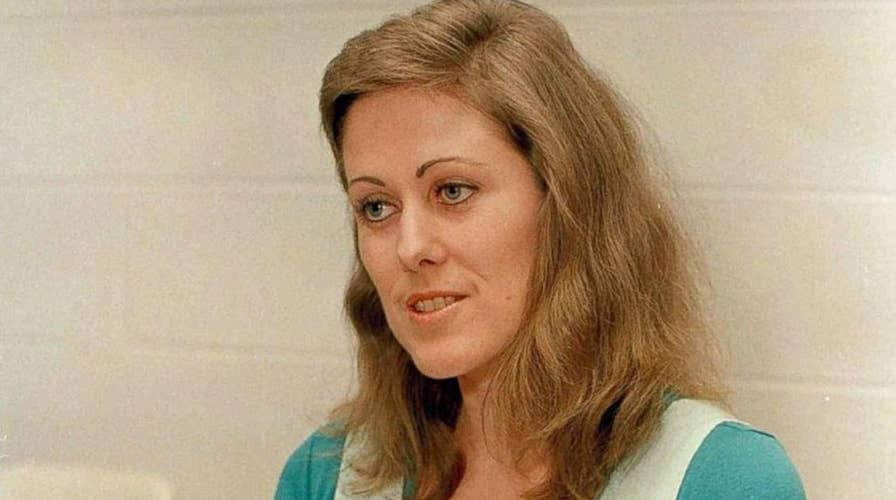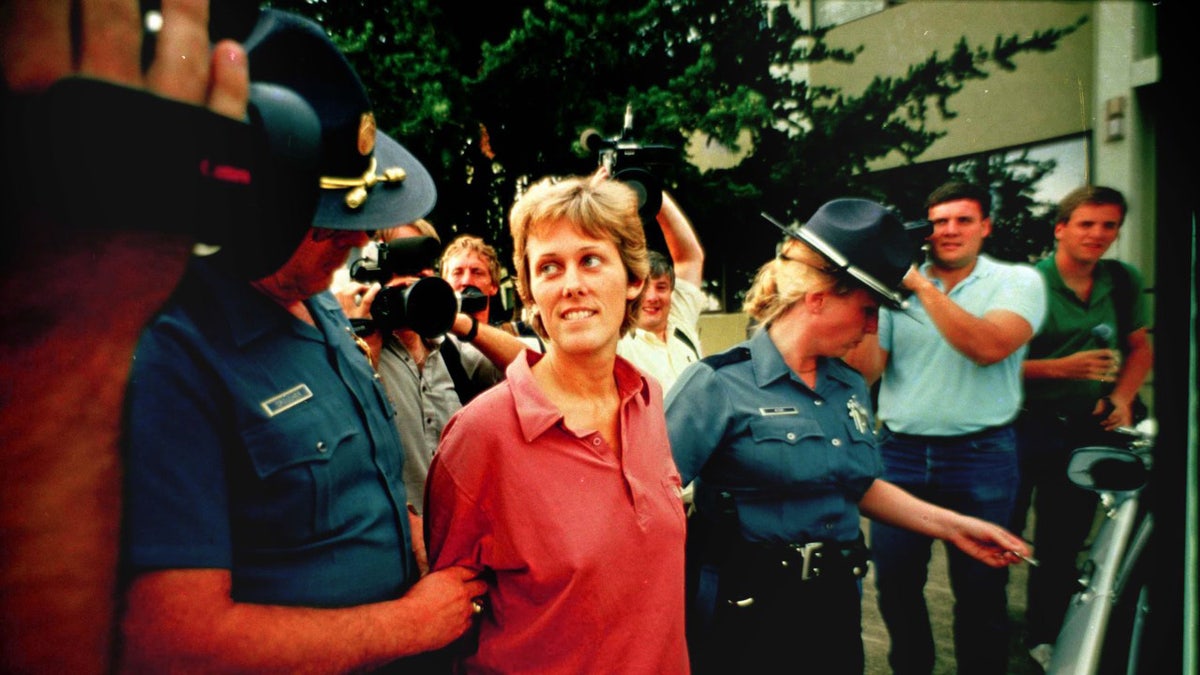The case of Diane Downs remains one of the most disturbing and widely discussed criminal cases in American history. It tells the chilling story of a mother who was convicted of killing her own children, leaving the nation in shock and disbelief. This case not only highlights the darkest aspects of human nature but also raises important questions about family dynamics and the criminal justice system.
On the surface, Diane Downs appeared to be an ordinary single mother struggling to make ends meet. However, beneath this facade lay a sinister reality that would soon come to light in one of the most horrifying incidents in Oregon's history. The events that unfolded in 1983 shocked the nation and brought attention to the complexities of domestic violence and mental health issues.
This article delves into the harrowing details of Diane Downs' crime, her trial, and the aftermath. We will explore her background, the events leading up to the tragic incident, and the lessons learned from this case. By understanding the circumstances surrounding this crime, we can gain insight into the human psyche and the importance of addressing mental health and domestic violence in our society.
Read also:Poki Flavors Exploring The World Of Unique And Flavorful Delights
Table of Contents
- Biography of Diane Downs
- The Incident: A Mother's Betrayal
- The Investigation: Piecing Together the Puzzle
- The Trial: Justice Served?
- Psychological Profile: Understanding Diane Downs
- Impact on Society: Lessons Learned
- Long-Term Effects on the Criminal Justice System
- Media Coverage: Sensationalism vs. Truth
- Mental Health: A Missing Link?
- Conclusion: Reflections on Diane Downs' Legacy
Biography of Diane Downs
Early Life and Background
Diane Downs was born on November 21, 1955, in Salem, Oregon. From an early age, she exhibited signs of instability and a troubled personality. Her childhood was marked by frequent moves and a lack of stability, which may have contributed to her emotional struggles later in life. By the time she reached adulthood, Diane had already experienced several failed relationships and marriages.
Below is a summary of her personal data:
| Full Name | Diane Elaine Downs |
|---|---|
| Date of Birth | November 21, 1955 |
| Place of Birth | Salem, Oregon |
| Marital Status | Divorced |
| Children | Three (two deceased) |
Career and Family Life
At the time of the murders, Diane was working as a cashier at a local store while raising her three children as a single mother. Financial struggles and an abusive relationship with her ex-boyfriend, Curt Kast, added significant stress to her life. These factors, combined with her mental health issues, created a volatile environment that ultimately led to the tragic events of May 1983.
The Incident: A Mother's Betrayal
On May 20, 1983, Diane Downs walked into a Salem, Oregon hospital with her three children—ages eight, seven, and three—claiming they had been shot by a stranger on the side of the road. However, medical examinations quickly revealed that the injuries were inconsistent with her story. Further investigation uncovered the horrifying truth: Diane herself had shot her own children, killing two of them and leaving the third critically injured.
Details of the Shooting
- Diane used a .22 caliber rifle to shoot her children.
- She claimed a "stranger" had attacked them on the side of the road.
- Her eldest son, Justin, survived despite severe injuries.
- Her daughter, Cheryl, and youngest son, Kenneth, succumbed to their wounds.
The Investigation: Piecing Together the Puzzle
Law enforcement officials were immediately suspicious of Diane's story due to inconsistencies in her account. Forensic evidence, including the trajectory of the bullets and the lack of a suspect, pointed to Diane as the perpetrator. Investigators also discovered that Diane had recently purchased life insurance policies for her children, raising further suspicion about her motives.
Key Evidence
- The bullets matched a rifle found in Diane's home.
- Witnesses reported seeing Diane behaving erratically in the days leading up to the shooting.
- Medical records showed Diane had sought treatment for depression and had a history of violent behavior.
The Trial: Justice Served?
Diane Downs' trial began in October 1983 and quickly became a media sensation. Prosecutors argued that Diane had committed the murders to escape her troubled life and start anew. Defense attorneys, however, claimed she was suffering from severe mental illness and lacked the capacity to understand the consequences of her actions. Despite this, the jury found Diane guilty of two counts of murder and one count of attempted murder.
Read also:Who Played Judy In The Santa Clause A Comprehensive Guide
Verdict and Sentencing
Diane Downs was sentenced to life in prison without the possibility of parole. Her case sparked widespread debate about the role of mental health in criminal trials and the appropriate punishment for such heinous crimes.
Psychological Profile: Understanding Diane Downs
Psychologists and criminologists have long studied Diane Downs' case to better understand the motivations behind her actions. Many believe her troubled upbringing, financial struggles, and abusive relationship contributed to her mental instability. Others argue that her actions were premeditated and driven by a desire to escape her responsibilities as a mother.
Factors Contributing to Her Behavior
- History of depression and anxiety.
- Exposure to domestic violence from her ex-boyfriend.
- Financial pressures and lack of support system.
Impact on Society: Lessons Learned
The Diane Downs case had a profound impact on society, prompting discussions about domestic violence, mental health, and the treatment of women in the criminal justice system. It also highlighted the importance of early intervention and support for individuals struggling with mental health issues.
Changes in Policy and Awareness
- Increased funding for domestic violence shelters and support services.
- Improved mental health screening for individuals involved in the justice system.
- Greater awareness of the signs of mental illness and domestic abuse.
Long-Term Effects on the Criminal Justice System
The Diane Downs case led to significant changes in the way the criminal justice system handles cases involving mental health and domestic violence. Judges and juries began to consider the psychological factors contributing to criminal behavior, leading to more nuanced sentencing decisions.
Reforms in the Justice System
- Implementation of mental health courts to address underlying issues.
- Training for law enforcement officers in recognizing signs of mental illness.
- Increased collaboration between mental health professionals and the justice system.
Media Coverage: Sensationalism vs. Truth
The media played a significant role in shaping public perception of the Diane Downs case. While some outlets focused on the sensational aspects of the crime, others sought to provide a more balanced view of the events and their causes. This case serves as a reminder of the importance of responsible journalism in covering complex and sensitive issues.
Challenges in Reporting
- Ensuring accuracy and fairness in reporting.
- Avoiding sensationalism and maintaining journalistic integrity.
- Providing context and background information to help readers understand the broader implications.
Mental Health: A Missing Link?
One of the most significant lessons from the Diane Downs case is the importance of addressing mental health issues before they escalate into tragedy. Many experts believe that early intervention and access to mental health services could have prevented this crime. This case underscores the need for continued efforts to reduce stigma and improve access to mental health care.
Improving Access to Mental Health Services
- Expanding funding for mental health programs and services.
- Reducing stigma through education and awareness campaigns.
- Encouraging individuals to seek help before reaching a crisis point.
Conclusion: Reflections on Diane Downs' Legacy
The case of Diane Downs serves as a stark reminder of the importance of addressing mental health and domestic violence in our society. While the details of her crime are undeniably shocking, they also highlight the need for greater understanding and compassion in dealing with individuals who may be struggling. By learning from this case, we can work toward creating a safer and more supportive environment for all members of our community.
We encourage readers to share their thoughts and reflections in the comments section below. Additionally, if you found this article informative, please consider sharing it with others who may benefit from the insights provided. Together, we can continue the conversation about mental health, domestic violence, and the criminal justice system.


